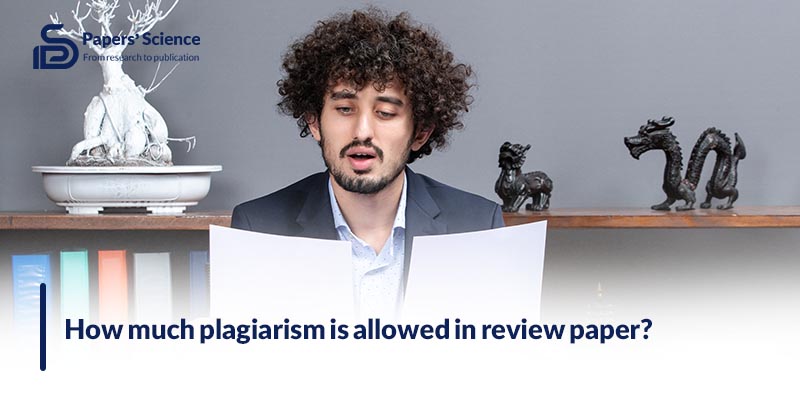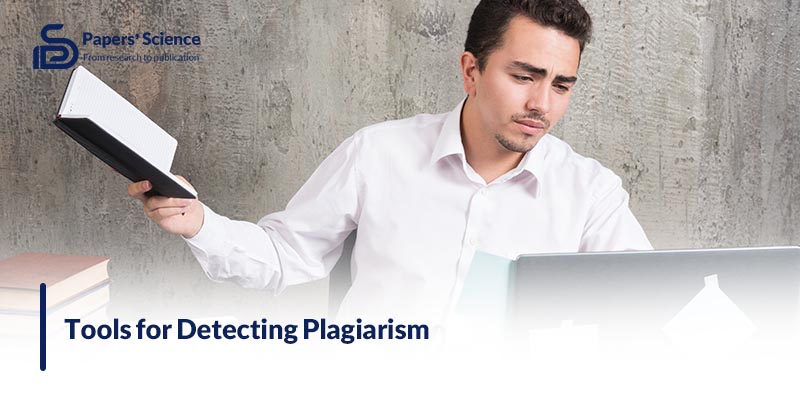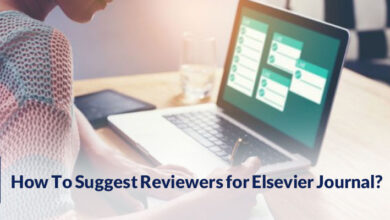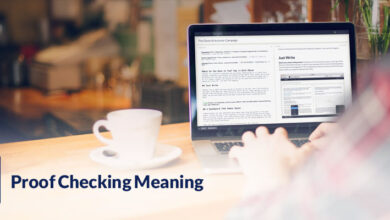How much plagiarism is allowed in review paper?

When researchers intend to submit a review paper, they need to check the percentage of plagiarism in their manuscript.
However, how much plagiarism is allowed in a review paper? Does it depend on the journal’s specific guidelines or not?
In this guide, we want to examine the maximum permissible percentage of plagiarism that a paper can have to be accepted for publication in a credible journal.
So, if you envisage publishing a review paper, it is highly recommended to read this article carefully!
The acceptable level of plagiarism for publication in a journal
The permissible threshold of plagiarism in journal publications is an intricate matter requiring scrupulous attention.
Journal publishers uphold the highest standards of academic integrity, and the conventional expectation is a stringent adherence to zero percent plagiarism.
Even a slight deviation from this standard, such as a 5% or greater similarity index, is typically deemed unacceptable.
Any detectable plagiarism could lead to profound consequences, including potential legal actions against the authors.
Therefore, authors submitting to journals must exercise the utmost care to ensure originality and proper citation, safeguarding the integrity of their work and avoiding the dangerous territory of plagiarism.

How to reduce the level of plagiarism in a review paper?
After knowing how much plagiarism is allowed in review papers, the next step for scholars aiming for academic excellence is to reduce the extent of plagiarism in their work.
Several effective ways can be used to accomplish this:
1. Thorough research & note-taking
Begin by conducting comprehensive research on your chosen topic. Take meticulous notes while reading, ensuring you understand the content. This will help you internalize the information, making it easier to express in your own words.
2. Effective paraphrasing
Instead of directly quoting from sources, practice paraphrasing. Reword the original text in a manner that retains the core idea but presents it uniquely. Always attribute the source to avoid unintentional plagiarism.
3. Proper citation & referencing
Master the art of proper citation and referencing. Utilize the citation style recommended by your academic institution or journal. Be diligent in creating a comprehensive reference list, citing all sources accurately.
4. Use Plagiarism detection tools.
Leverage plagiarism detection tools available online. These tools can help you identify any potential instances of unintentional plagiarism, allowing you to rectify them before submission. We will introduce the best ones in the following section.
5. Peer review and feedback
Seek feedback from peers or mentors during the writing process. They can provide valuable insights into areas where plagiarism may be inadvertently present and suggest improvements.
Read More: Writing a review article for the beginners in research
The best tools & websites for detecting plagiarism in a review paper.

Identifying plagiarism in a review paper is vital to maintaining academic integrity. Fortunately, there is a plethora of tools and websites designed to assist in this endeavor.
Here are some of the best options available:
· Turnitin
Widely used in educational institutions, Turnitin is renowned for its comprehensive plagiarism detection capabilities. It checks submitted papers against a vast database of academic and non-academic content, highlighting potential matches and providing similarity reports.
· Grammarly
Beyond grammar and spelling checks, Grammarly offers a plagiarism checker that scans your text against a vast library of online sources. It provides detailed reports on potential plagiarism, helping you rectify any unintentional similarities.
· Copyscape
A popular choice for web content, Copyscape specializes in identifying duplicate content online. It is useful for authors looking to ensure the originality of their review papers by detecting any web-based sources with similar content.
· Plagscan
Plagscan is an effective plagiarism detection tool suitable for academia. It checks documents against a vast database of academic papers, journals, and websites, offering a detailed report on potential plagiarism.
· DupliChecker
This online tool provides a simple and free way to scan your review paper for plagiarism. It checks content against various online sources and generates a similarity report.
· CitePlag
Tailored for academic purposes, CitePlag is an open-source plagiarism checker that integrates with LaTeX documents. It is particularly useful for scholars working with complex document formats.
· Google Scholar
While not a dedicated plagiarism checker, Google Scholar can be a valuable resource. Google Scholar helps authors identify sources that may need proper citations in their review papers.
· Viper
Viper is a free plagiarism detection tool that allows you to scan your paper and compare it against a database of academic papers, journals, and essays.
To wrap it up
In conclusion, upholding academic integrity in review papers is paramount. Striving for originality while citing sources properly is the key to success.
Remember, the question of how much plagiarism is allowed in a review paper carries significant weight.
Scholars can effectively navigate this difficult balance by employing ethical writing techniques, plagiarism detection tools, and a commitment to honest research.

Now, what are your thoughts on the “How much plagiarism is allowed in a review paper?” topic? Feel free to share your insights in the comments below.



